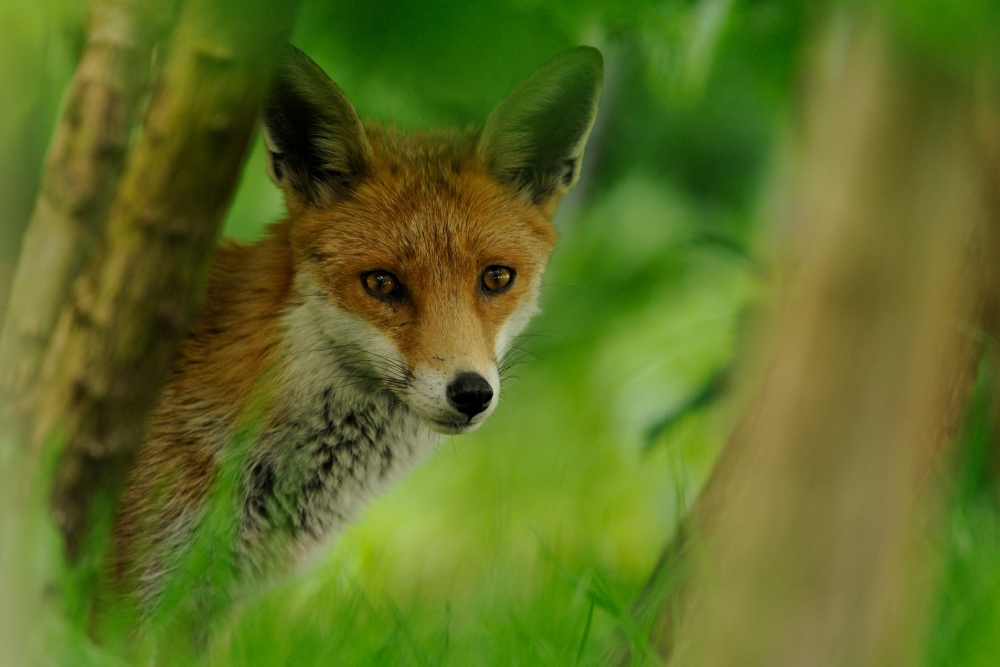Red fox

Status
Native, common and widespread
Population
357,000
Scientific name
Vulpes vulpes
The distinctive red-brown fur and long bushy tail of the fox are a familiar sight almost everywhere in the British Isles. Foxes are intelligent, adaptable mammals, opportunistic, with unfussy palates, and they make use of a wide range of habitats, including those of towns and cities. They are social animals, living in family groups of a breeding pair, together with cubs in the spring, and sometimes other subordinate juveniles and adults. The latter are usually young born the previous year and help with the rearing of cubs, feeding, grooming and playing with them. Each group occupies a territory, which is marked with urine and scats. Dens (called ‘earths’) may be dug in banks or make use of (disused or occupied) badger setts or old rabbit burrows. In urban areas, favoured sites for dens are under buildings or sheds, and in overgrown gardens and cemeteries.
Foxes hunt and scavenge with keen senses of smell and hearing, and probably use the latter to locate earthworms, which can make up a large part of their diet.
Head-body Length: 56 – 75cm
Tail length: Slightly more than half the head-body length
Weight: 4.0 – 9.5kg
Lifespan: Maximum age in the wild is 10 – 11 years. In areas where they are controlled, fewer than 1% will survive more than 6 years
Reproduction
Foxes mate between December and February, and litters of 4 – 5 blind and deaf cubs are born between March and May. Mothers spend almost all of their time with the cubs for the first 2 – 3 weeks, receiving food from the male or other members of the group. The young are weaned at four weeks and are independent by the autumn, typically moving away between October and January.
Diet
Almost anything from rabbits, field voles, earthworms and insects, to fruit and vegetables. In urban areas, they scavenge food from rubbish bins and gardens. Food is often stored to be eaten later.
Habitat
Most abundant in habitats offering a variety of shelter and food, including woodland, farmland, scrub and upland areas, as well as residential suburbs and gardens.
Predators
Few natural predators but cubs may be killed by badgers, dogs, and golden eagles. Most deaths are caused by humans.
Threats
Road traffic, accidental and deliberate poisoning, and shooting.
Conservation status
GB Red List: Least Concern (LC).
Population size and distribution
GB population 357,000. The British Trust for Ornithology’s Breeding Bird Survey, which records mammals a well as birds, shows a decline of almost a half (48%) in the rural population between 1995 and 2022. In more urban areas, however, the population has changed little nationally over a similar period (2003-2022), seen from records from PTES’ Living with Mammals survey. Foxes are widely distributed in Britain and Ireland but are absent from most of the Scottish islands (except Skye and Harris) and from the Scilly and Channel isles.
Did you know?
Foxes communicate with each other using a wide range of calls, facial expressions and body postures, as well as scent markings. Twelve adult and eight pup vocalisations have been identified and 28 groups of sounds described. The loud contact calls made by both sexes, particularly in the winter, include a blood-chilling ‘scream’ that has unsettled many an urban resident.
